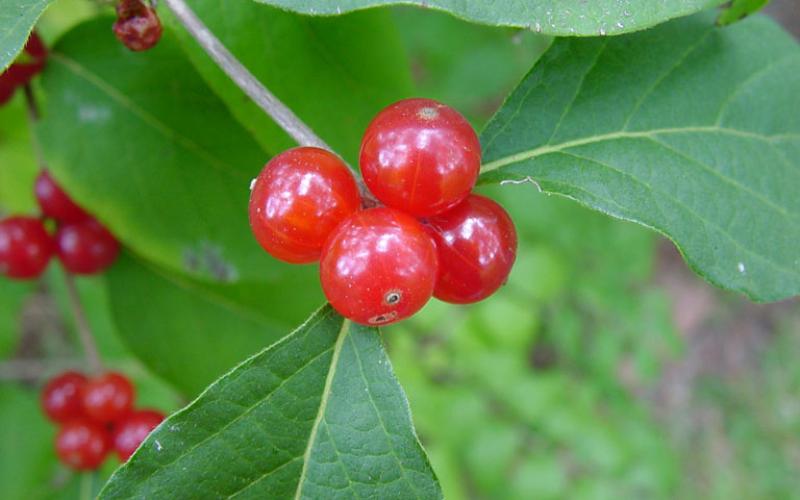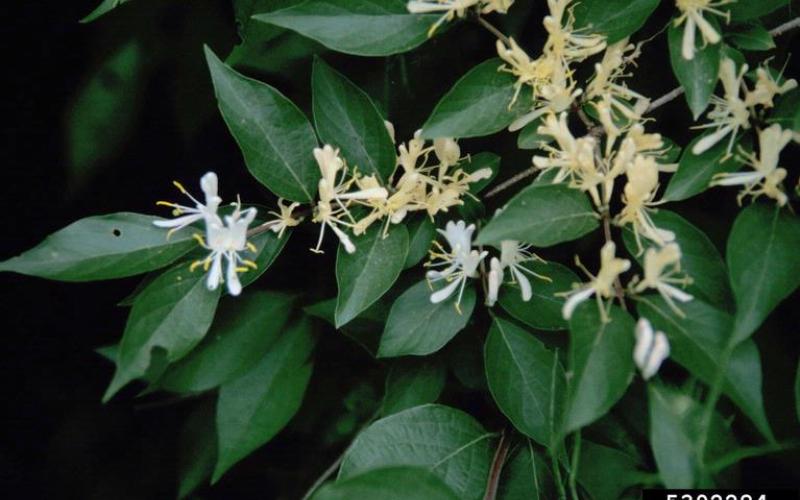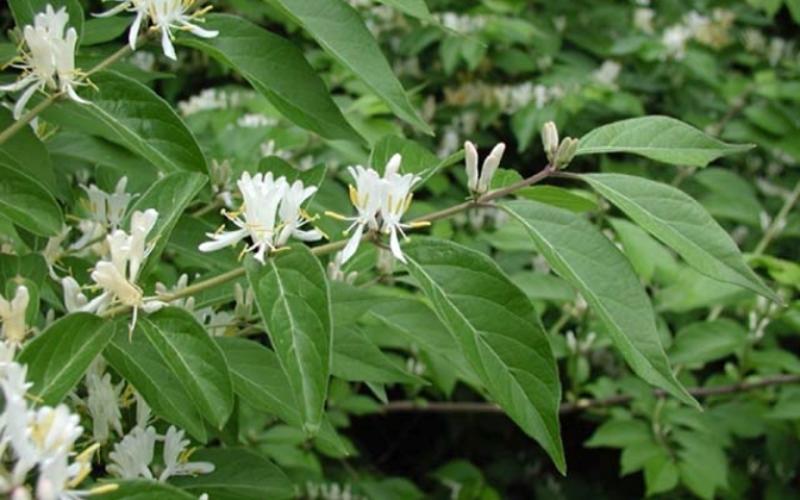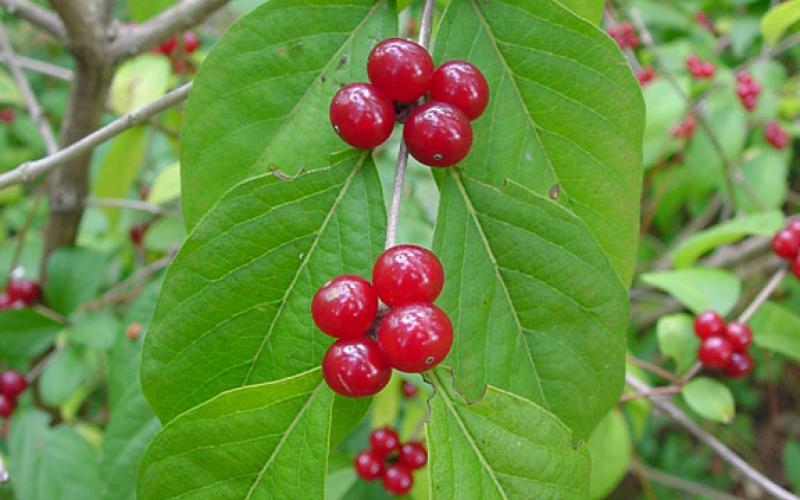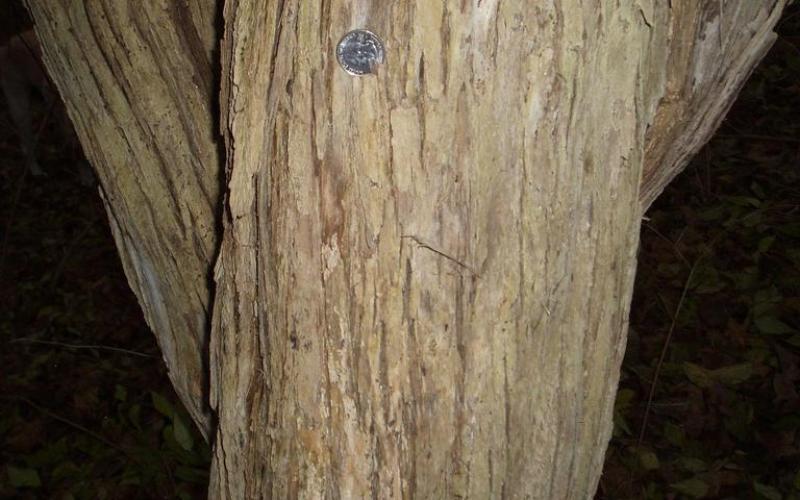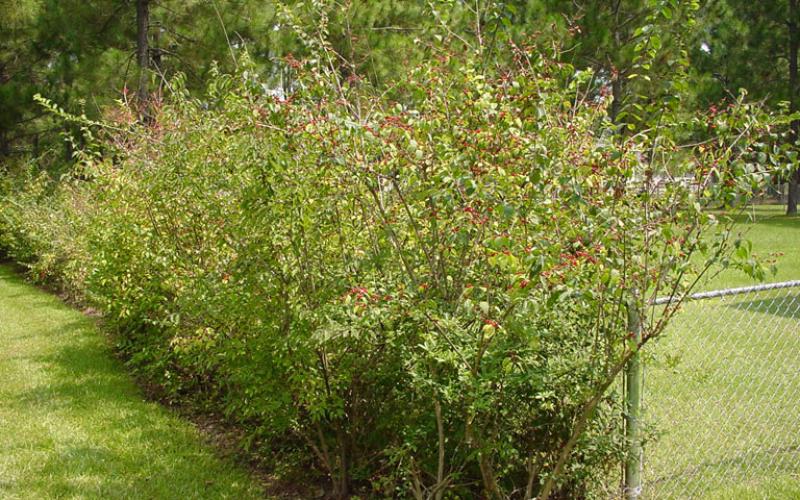Common Name: Amur Honeysuckle
Scientific Name: Lonicera maackii (Rupr.) Herder
Synonyms: Bush honeysuckle
Related species: Lonicera morrowii, Lonicera tatarica, Lonicera x bella
Legal Status
Propagation and sale of this plant are prohibited in Minnesota. Transportation is only allowed when in compliance with Minnesota Statute 18.82. Although Restricted Noxious Weeds are not required to be controlled or eradicated by law, landowners are strongly encouraged to manage these invasive plants on their properties in order to reduce spread into new areas.
Background
Amur honeysuckle was planted as an ornamental in New York in the late 1800s and has been widely planted for wildlife and erosion control. It has naturalized in the east and Midwest United States. The amount of Amur honeysuckle in Minnesota is likely very small, but it has not been well studied. It is native to Manchuria, Japan, Korea, and China.
Description
- Amur honeysuckle is an erect, multi-stemmed, deciduous shrub that can grow to 15- 20 feet in height.
- It can be easily confused with similar species like Morrow’s, Tatarian or Bell’s honeysuckles, all distinguished by slight differences in flower color and leaf pubescence.
- Flowers are less than 1 inch long, paired, tubular, white to pinkish, and five-petaled.
- The leaves are ovate, opposite, lightly pubescent, and 2- 3 inches long.
- The fruit are spherical red to orange-red berries, developing in late summer and often persisting throughout the winter.
- The pith of mature stems is hollow and white or tan, as opposed to native shrub honeysuckles which have solid white pith. See the Minnesota Department of Transportation guide for comparisons of various honeysuckle.
Habitat
It is able to grow in a range of conditions from full sun to full shade and wet to dry soils. It thrives in disturbed sites, including forest edges, woodlots, floodplains, old pastures, fields, and roadsides.
Means of spread and distribution
Plants reproduce by seed which can be spread by wildlife.
Impact
High densities of honeysuckles can suppress native plant and timber regeneration and form monocultures. Ecosystem richness and density of tree seedlings are substantially reduced in honeysuckle infestations. This species can alter a habitat’s microclimate, by creating dense shade, depleting soil moisture and nutrients, and possibly releasing allelopathic chemicals that inhibit growth of other plants. It can be especially harmful to spring ephemerals, due to its early leafing.
Prevention and management
- Once established, Amur honeysuckle is difficult to control. For all management options, infestation sites will need to be monitored and treated repeatedly for 3-5 years until the seedbanks and suckers are depleted.
- Do not plant invasive honeysuckle species as an ornamental and eradicate existing plants on your property. There are native species which can be planted as alternatives, you can find a list of them in the MIPN Landscape Alternatives brochure.
- Young plants can be pulled by hand. Mature plants can be removed by using a weed wrench tool or by repeated cutting. Keep in mind that physical removal in this manner can disturb soils and result in reinvasion or resprouting of honeysuckles and other exotics.
- Prescribed burning can be an effective tool to control infestations in combination with other techniques. Spring burning will kill seedlings and the tops of mature plants. Make sure to contact the Minnesota Department of Natural Resources to learn more about control burning practices and regulations.
- Foliar, stem injection, and cut-stem application of herbicides that translocate their active ingredients into the root system can be very effective. Treatments will need to be repeated for several years to eradicate a population. If using herbicide treatments, check with your local University of Minnesota Extension agent, co-op, or certified landscape care expert for assistance and recommendations. There are several businesses throughout the state with certified herbicide applicators that can be hired to perform chemical applications.
